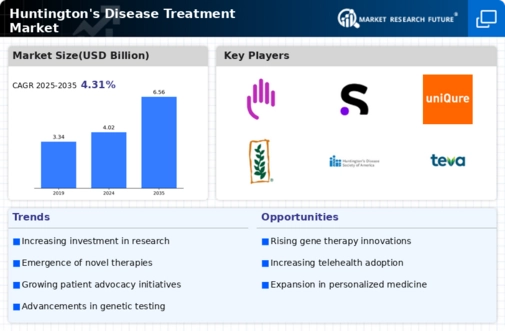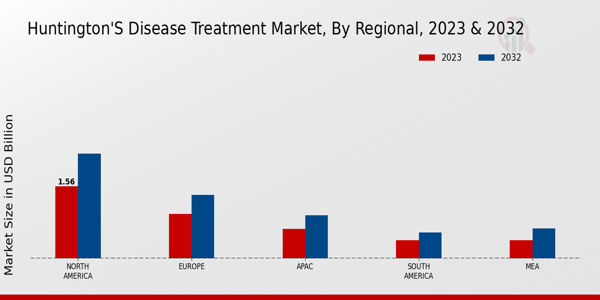Market Analysis
In-depth Analysis of Huntington’s Disease Treatment Market Industry Landscape
The Huntington's disease treatment market is characterized by dynamic trends driven by scientific advancements, ongoing research efforts, and the complex nature of Huntington's disease (HD). The dynamics of the HD treatment market are shaped by technology evolution. With HD being an inherited neurodegenerative disorder occurring sporadically and rarely among families worldwide; targeted therapies, gene-silencing strategies as well as neuroprotective mechanisms have opened up new ways of managing it. Huntington's disease treatment market dynamics depend on regulation. Therapeutic development, approval, and commercialization for rare and genetic illnesses are regulated to ensure safety and effectiveness. The regulatory environment affects clinical trial design, patient recruitment, and therapy development. Being an orphan condition, regulatory agencies may give incentives and shorten approval times for new therapies for HD. Market dynamics are further influenced by economic considerations and healthcare reimbursement policies. The economic burden of managing HD-related symptoms, the cost-effectiveness of potential treatments, and reimbursement policies impact their adoption by healthcare providers and institutions. In addition, the high costs associated with researching, developing and manufacturing innovative therapies pose economic challenges requiring strategic alliances and funding initiatives aimed at supporting research on HD treatment. Competition among key market players is a driving force in the dynamics of the Huntington's disease treatment market. Therapeutic efficacy, safety, disease-modifying potential, and patient outcomes characterize pharmaceutical and biotech goods. Research platforms have diversified into gene therapy approaches; small molecules as well as RNA-targeting methods among others. Licensing agreements; strategic partnerships; collaborations with academic institutions are critical components to progress HD research and treatment development within this sector.
The impact of the COVID-19 pandemic on Huntington's disease treatment market dynamics has been to highlight the importance of scientific collaboration, adaptive clinical trials and resilient healthcare systems. This crisis has also created awareness about issues facing individuals suffering from rare diseases hence the need for continued research and innovation in the quest for treatments for conditions like Huntington’s disease.
















Leave a Comment